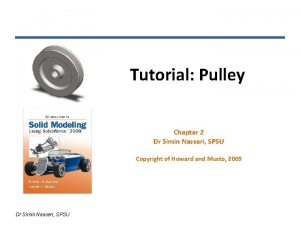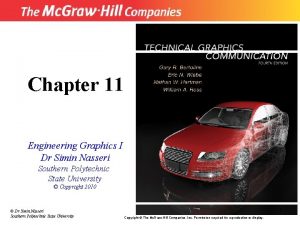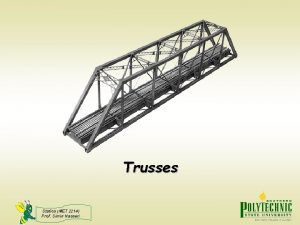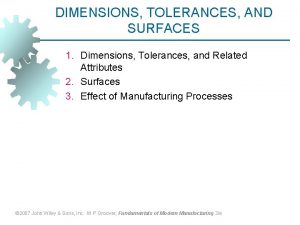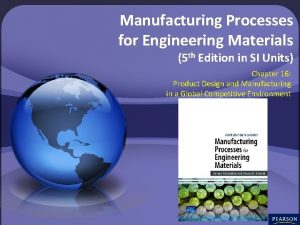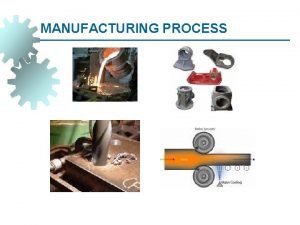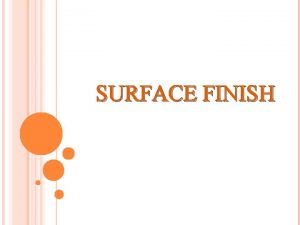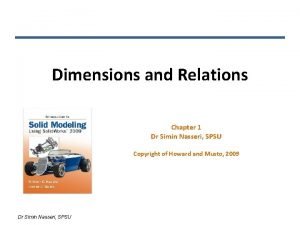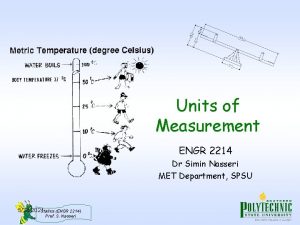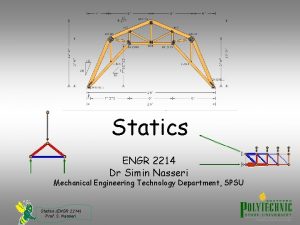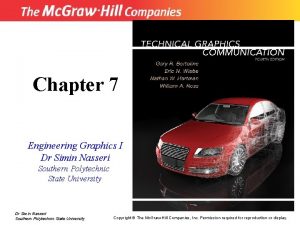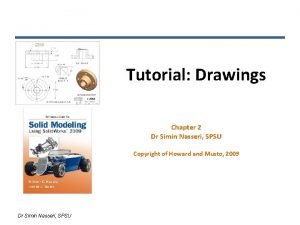Manufacturing Processes Prof Simin Nasseri Surface Finish Most










- Slides: 10

Manufacturing Processes Prof Simin Nasseri

Surface Finish Most grinding is performed to achieve good surface finish Best surface finish is achieved by: § Small grain sizes § Higher wheel speeds § Denser wheel structure = more grits per wheel area Two main categories of grinding: § Surface grinding § Cylindrical grinding Manufacturing Processes Prof Simin Nasseri

Four Types of Surface Grinding Figure 25. 7 (a) Horizontal spindle with reciprocating worktable, (b) horizontal spindle with rotating worktable, (c) vertical spindle with reciprocating worktable, (d) vertical spindle with rotating worktable. Manufacturing Processes Prof Simin Nasseri

Surface Grinder Figure 25. 8 Surface grinder with horizontal spindle and reciprocating worktable (most common grinder type). Manufacturing Processes Prof Simin Nasseri

Cylindrical Grinding Figure 25. 9 Two types of cylindrical grinding: (a) external, and (b) internal. Manufacturing Processes Prof Simin Nasseri

Other Abrasive Processes § Honing § Lapping § Superfinishing Manufacturing Processes Prof Simin Nasseri

Honing Abrasive process performed by a set of bonded abrasive sticks using a combination of rotational and oscillatory motions. Creates a characteristic cross‑hatched surface that retains lubrication. Grit sizes range between 30 and 600. Figure 25. 16 The honing process: (a) the honing tool used for internal bore surface. Manufacturing Processes Prof Simin Nasseri Surface finishes of 0. 12 m (5 -in) or better.

Honing Common application is to finish the bores of internal combustion engines. Manufacturing Processes Prof Simin Nasseri

Lapping Uses fluid suspension of very small abrasive particles between workpiece and lap (tool). Lapping compound - fluid with abrasives, general appearance of a chalky paste. Applications: optical lenses, metallic bearing surfaces, gages. Figure 25. 17 The lapping process in lens‑making. Manufacturing Processes Prof Simin Nasseri

Superfinishing Similar to honing - uses bonded abrasive stick pressed against surface and reciprocating motion Differences with honing: * Shorter strokes * Higher frequencies * Lower pressures between tool and surface * Smaller grit sizes Figure 25. 18 Superfinishing on an external cylindrical surface. Manufacturing Processes Prof Simin Nasseri
 Simin nasseri
Simin nasseri Cavalier
Cavalier Trusses lie on a plane
Trusses lie on a plane Bilateral tolerance
Bilateral tolerance Manufacturing cost vs non manufacturing cost
Manufacturing cost vs non manufacturing cost Job costing vs. process costing
Job costing vs. process costing Non controllable cost
Non controllable cost Manufacturing cost vs non manufacturing cost
Manufacturing cost vs non manufacturing cost Additive manufacturing steps
Additive manufacturing steps Manufacturing processes for engineering materials
Manufacturing processes for engineering materials Classification of production process
Classification of production process
